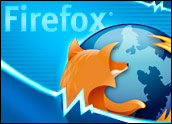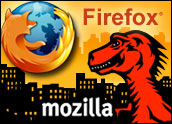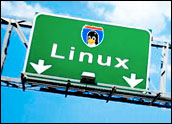
Sun Microsystems this week delivered what it believes is a one-two punch in the battle to create the software platform of choice for the next-generation of the Internet. Analysts, however, are not sure the experiment will do anything beyond reducing pricing power in the field.
Based on what Sun calls “tremendous momentum” with the Solaris Operating System as a free and open-source software, the company is making the Java Enterprise System, Sun N1Management software, and Sun developer tools available at no cost for both development and deployment. Sun also said it would integrate all of this software along with the Solaris OS into the Solaris Enterprise System.
Sun President and COO Jonathan Schwartz said its 3.4 million Solaris customers and nearly 1 million Java Enterprise System subscribers and developers have asked the company to take the next logical step — combining its operating system with its infrastructure software platform.
“One hundred percent of our customers are deploying Web infrastructures and asking for relief from onerous licenses and system integration activity,” Schwartz said. “With our announced intent to open source the entirety of our software offerings, every single developer across the world now has access to the most sophisticated platform available for Web 1.0, 2.0 and beyond.”
Windows Killer?
With this announcement, Sun is creating a no cost and open alternative to the Windows environment. The company said Solaris Enterprise System has all of the benefits of an integrated offering while still enabling customers the flexibility to address their requirements by deploying the specific components they need into alternative operating systems.
But can Sun hope to compete with Microsoft’s Windows? Interarbor Solutions Principal Analyst Dana Gardner told TechNewsWorld he sees Sun Enterprise System in a completely different category than Windows. Windows is proprietary. Windows is paid for through licenses, not subscriptions. And Windows tools have a highly integrated and automated approach.
“Anyone who has tried to outdo Microsoft at what Microsoft does hasn’t fared particularly well,” Gardner said. “I don’t see this by any stretch of the imagination an Windows killer. It’s a flea on the back of Windows, if anything. It may have a limited role with people who are seeking a single platform — with attributes that Linux has thrived on in the past — to standardize around.”
Targeting Developers
Nonetheless, Sun said it is demonstrating its commitment to the developer community and to the success of its customers by working with its extensive partner ecosystemto continue to deliver a set of support services.
Sun said it plans to roll out a vast number of new, complementary services that span from early developer training and education to sophisticated remote and managed services to automate processes that are currently manually accomplished.
Sun’s new Customer Network Services provides administrators and developers with automated support for operations management, including patches, upgrades, updates and warranty, without the high-costs associated with professional services.
Jury Still Out
Analysts commend Sun for being innovative, bold and experimenting, but without demonstrating bottom line improvements over the next few quarters that experiment cannot prove successful.
“I am not sure I understand how Sun makes a living at this given that ultimately they need to have recurring revenue from software and sell a lot more hardware,” Gardner said.
“If Sun starts distributing a whole lot of free software but doesn’t have a lot of financial benefits to show for it, then you have to wonder what they have actually accomplished other than perhaps reducing the pricing power of other vendors in the field. In that case Sun would become a spoiler rather than winner.”




















































